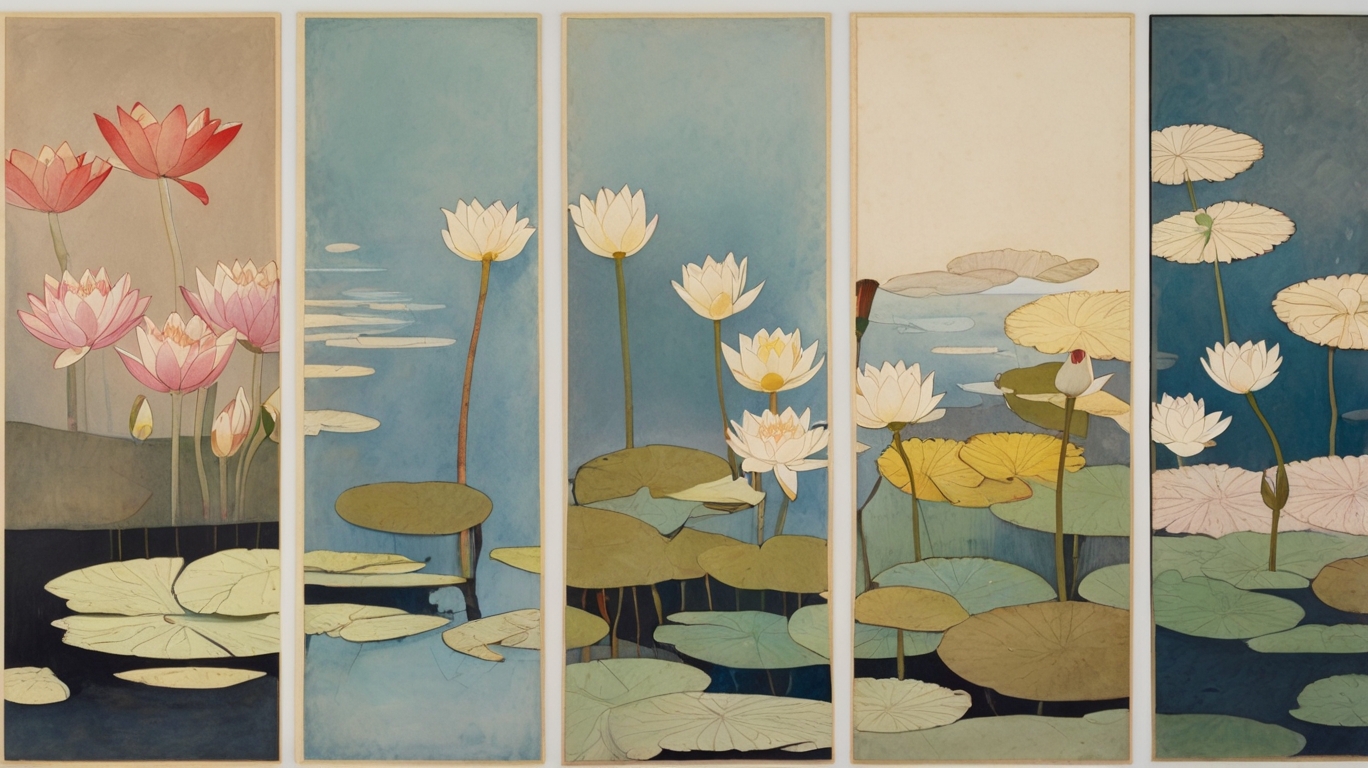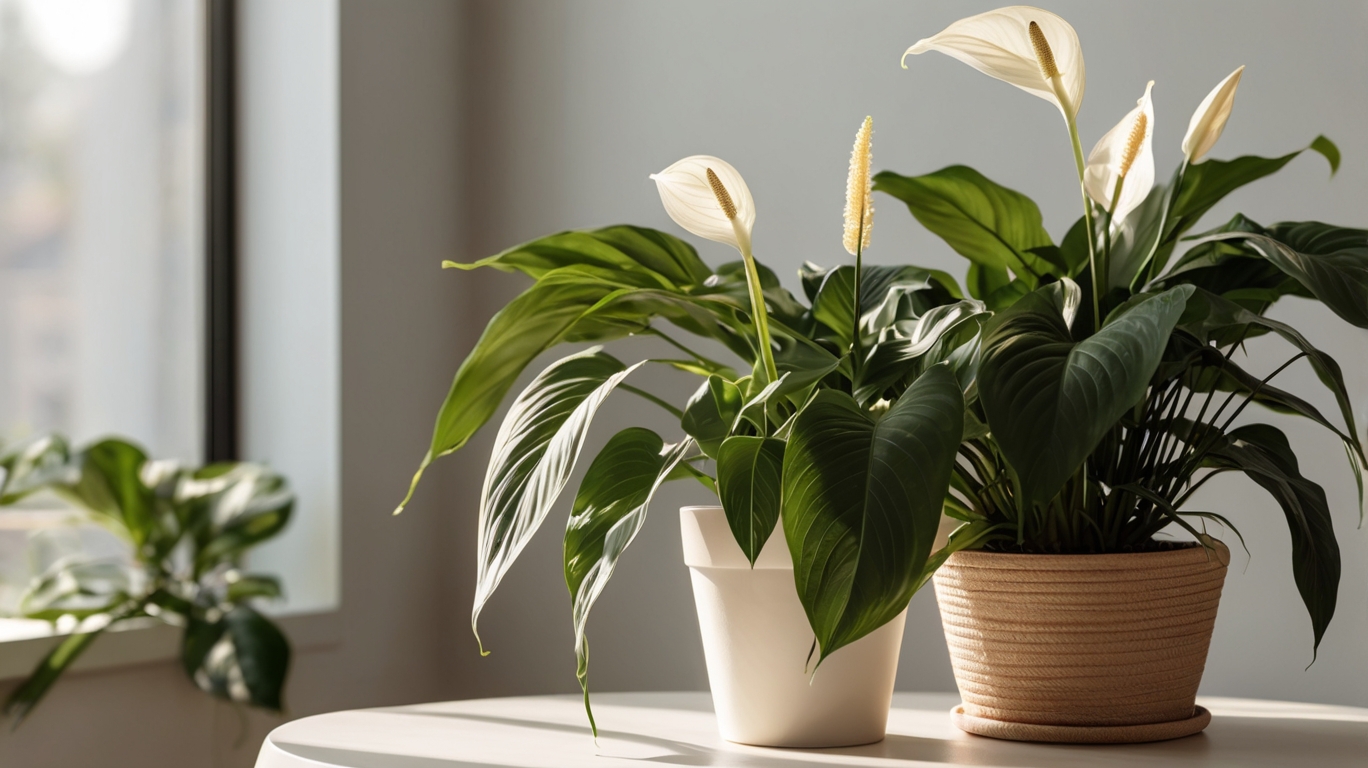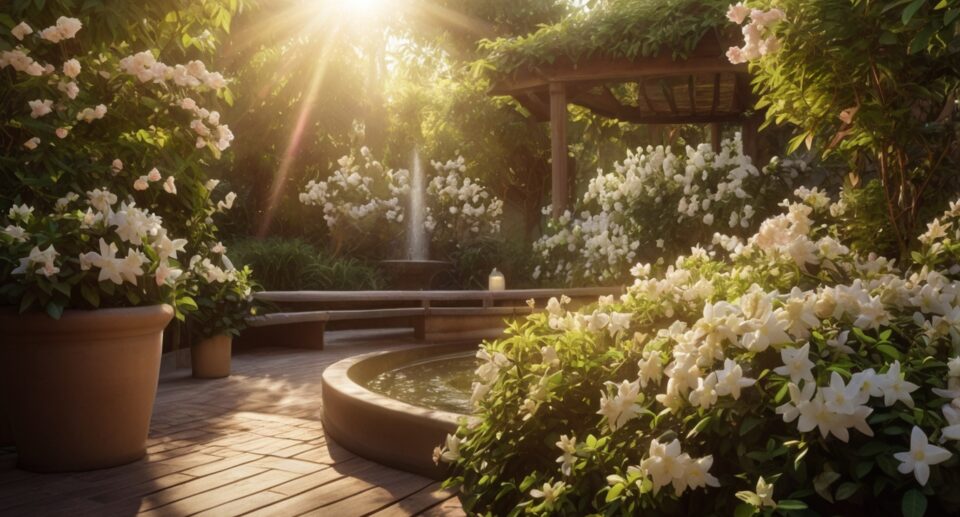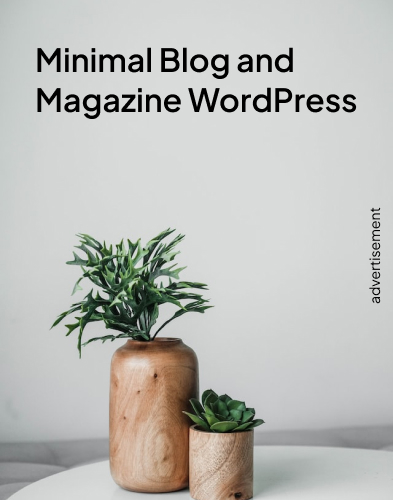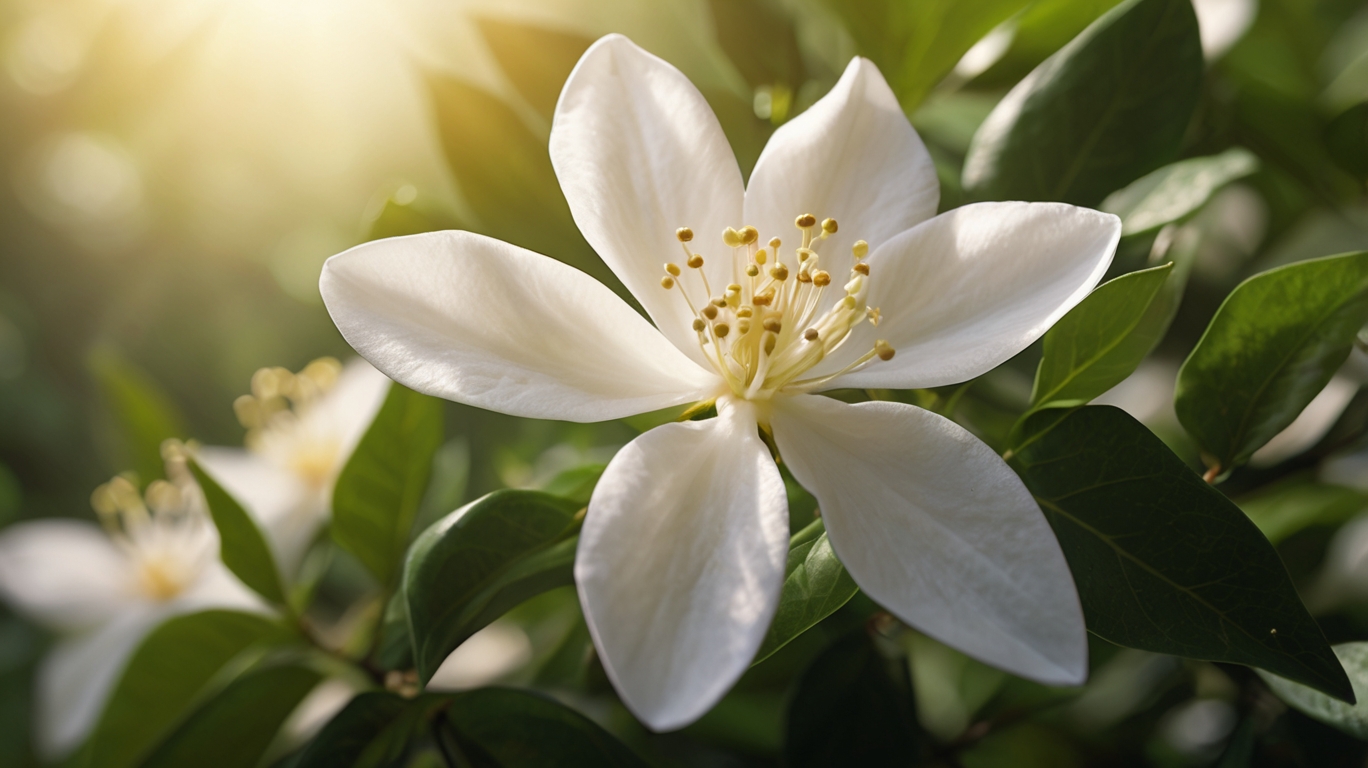The #1 Ultimate Guide on How to Take Care of jasmine flower
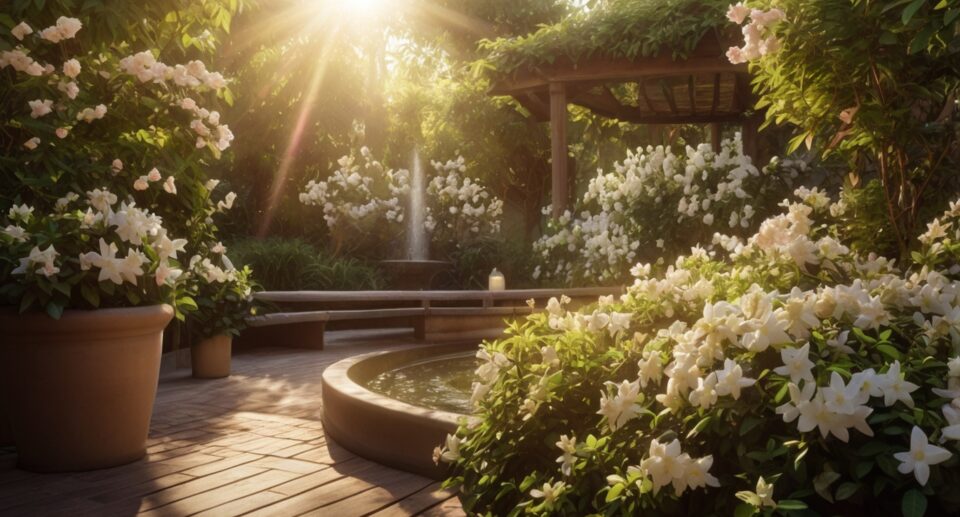
Understanding the Jasmine Flower: Types and Characteristics
Jasmine flowers are celebrated for their enchanting fragrance and delicate beauty, making them a beloved addition to gardens and homes worldwide. To cultivate jasmine successfully, it is essential to comprehend its various types and characteristics, as each possesses unique traits and care requirements.
Types of Jasmine Flowers
Jasmine encompasses numerous species, each with distinct features. Some of the most recognized types include:
- Common Jasmine (Jasminum officinale) Known as poet’s jasmine, this species produces white, star-shaped flowers that bloom from late spring to fall. It thrives in warm climates and is often used for landscaping or as vertical garden accents.
- Arabian Jasmine (Jasminum sambac) Popularly used for tea and perfumes, Arabian jasmine features smaller flowers and grows well as a houseplant. It blooms year-round in tropical regions and prefers a sunny location.
- Spanish Jasmine (Jasminum grandiflorum) Valued for its larger, intensely fragrant flowers, this type is often cultivated for essential oils. Spanish jasmine flourishes in full sun and well-drained soils.
- Winter Jasmine (Jasminum nudiflorum) Differing from others, Winter jasmine flower features yellow blooms and is prized for its ability to blossom during colder months. It serves as ground cover or cascades over walls and fences.
- Pink Jasmine (Jasminum polyanthum) Renowned for its fast-growing nature and clusters of pink-hued buds that open into white flowers, Pink jasmine is ideal for trellises and can enhance indoor decor.
Characteristics of Jasmine Flowers
Jasmine flowers are primarily known for their undeniable beauty and heady fragrance. They are typically star-shaped, featuring five or more petals depending on the species. The flowers emerge in clusters on twining vines or shrubs, which can vary in size. Depending on the type, jasmine can grow as climbers, ground covers, or bushes, giving gardeners flexibility in their usage.
These plants thrive in warm climates and prefer sunlight for robust growth and vibrant blooms. While jasmine flowers are typically white, there are species like Winter jasmine that offer yellow blossoms, adding versatility to their visual appeal. The plants often attract pollinators like bees and butterflies, contributing to ecological balance.
Understanding these varieties and traits equips gardeners with the knowledge to select the jasmine species most suited to their environment and aesthetic preferences.

Choosing the Right Location for Your Jasmine Flower
When selecting a suitable location for a jasmine flower, it is essential to consider factors that ensure optimal growth, health, and flowering. Jasmine thrives in specific conditions that cater to its needs. Understanding these requirements will play a vital role in helping the plant flourish.
1. Sunlight Requirements
Jasmine plants prefer locations with abundant sunlight. Most varieties flourish when exposed to full sun for at least six hours a day. However, partial sunlight can be sufficient for certain types of jasmine flower, especially if direct sunlight becomes too intense. Positioning the plant near a sunny window or in a garden with ample light will promote healthy growth and vibrant blooms.
2. Temperature Considerations
Jasmine Flower is sensitive to extreme temperatures. It typically grows best in moderate climates, where conditions are neither too hot nor too cold. The ideal temperature range for most jasmine varieties is between 60°F to 75°F. Frost and prolonged exposure to freezing temperatures can damage the plant, so locating it in a frost-free area or indoors during colder months is essential.
3. Soil Characteristics
The soil in the chosen location should be well-draining to prevent water stagnation, which can lead to root rot. Jasmine Flower prefers slightly acidic to neutral soil, with a pH range of around 6.0 to 7.5. Ensuring the soil is fertile and rich in organic matter will provide the plant with essential nutrients.
4. Shelter from Harsh Winds
It is important to protect jasmine flower from harsh or drying winds, which can harm stems, foliage, and flowers. Choosing a spot with natural windbreaks, such as walls, fences, or dense shrubbery, can shield the plant and ensure its delicate blooms are not damaged.
5. Choose Accessible and Aesthetic Spots
Selecting a location close to walkways, patios, or frequent sitting areas allows gardeners and visitors to appreciate jasmine’s aromatic qualities. Its fragrant flowers can also enhance outdoor living spaces while making it easier to tend to the plant consistently.
Properly assessing light, soil, and temperature conditions while safeguarding against environmental hazards will provide jasmine flower with the optimum setting for its growth and beauty.
Ideal Soil Conditions for Healthy Jasmine Growth
To thrive and produce its fragrant blossoms, jasmine flower requires soil that is conducive to its growth. Selecting the right soil is essential for maintaining the plant’s health and maximizing its blooming potential. Jasmine prefers soil that meets specific criteria in terms of texture, composition, and drainage.
Soil Properties for Jasmine Health
Jasmine Flower flourish in well-draining soil. Poor drainage can lead to waterlogging, which causes root rot and overall plant decline. Loamy soil, which offers a balanced mixture of sand, silt, and clay, is an excellent choice as it retains enough moisture without becoming overly saturated.
The soil should also be rich in organic matter to ensure adequate nutrients. Organic material, such as compost or well-aged manure, enhances the soil’s structure while providing essential components for robust growth. Incorporating such amendments helps maintain fertility over time.
Jasmine Flower performs best in soil with a pH range between 6.0 and 7.5. This neutral to slightly acidic environment encourages efficient nutrient uptake. Acidic soils can be neutralized by adding lime, while overly alkaline soils may benefit from sulfur or organic compost.
Tips for Preparing Soil for Jasmine
- Test soil pH: Before planting jasmine flower, conduct a soil test to determine its pH balance so that adjustments can be made if needed.
- Improve drainage: For heavy clay soils, mix in sand or perlite to enhance drainage and prevent water stagnation around the roots.
- Fertilize adequately: Combine compost or organic matter into the soil during preparation for a nutrient-rich planting environment.
- Avoid compacted soil: Loosen the soil before planting to ensure proper aeration and root penetration.
Seasonal Considerations
For optimal growth, jasmine flower requires soil that stays moist but not soggy during the growing season. Mulching around the base of the plant can maintain soil moisture and minimize evaporation, especially in warmer months.
Proper attention to soil quality early on provides the foundation for healthy jasmine development. A well-prepared planting medium ensures the plant thrives and continues to bloom year after year.
Watering Techniques: How Much is Too Much?
Watering jasmine flowers requires a delicate balance to ensure their health and vitality without causing harm. Jasmine prefers soil that remains consistently moist but not overly saturated. Overwatering can lead to root rot and hinder the plant’s ability to absorb nutrients efficiently, while underwatering may result in wilting and stunted growth.
Signs of Overwatering and Underwatering:
- Overwatering: Watch for yellow, limp leaves and an unpleasant smell coming from the soil. These are indications that water is pooling in the pot and the roots are suffocating.
- Underwatering: Look out for droopy, crispy, or dry leaves. If the soil feels excessively dry and pulls away from the edges of the pot, the plant may not be getting adequate hydration.
Best Practices for Watering Jasmine:
- Check the Soil Moisture: Use a finger or a moisture meter to test the top inch of soil. Jasmine should only be watered when this layer feels slightly dry, not bone dry.
- Use Lukewarm Water: Avoid using cold water, as it can shock the roots, especially if the plant is indoors. Lukewarm water mimics natural conditions and encourages healthy growth.
- Water at the Base: Direct water at the soil level near the plant base rather than the leaves. Wetting the leaves frequently during watering can increase the risk of fungal diseases.
- Adjust According to Weather: Jasmine may require more frequent watering in warm, sunny weather and less hydration during cooler months.
- Drainage: Ensure the pot or planting area has adequate drainage holes to prevent standing water. Jasmine thrives in soil that drains well but retains some moisture.
Monitoring the frequency and volume of water is vital for ensuring the plant’s longevity. Proper care during watering significantly enhances jasmine’s ability to produce vibrant blooms and maintain lush, green foliage.
Optimal Fertilization Strategies for Thriving Jasmine
To ensure jasmine flowers thrive and produce abundant blooms, proper fertilization is crucial. Jasmine plants require a balanced approach that supports healthy foliage, strong root systems, and vibrant flowers. Understanding their nutritional needs can contribute significantly to their overall well-being.
Types of Fertilizers Suitable for Jasmine
Using the right fertilizer ensures jasmine flower gets the nutrients it needs to flourish. The following types are particularly effective:
- Balanced Fertilizers: A fertilizer with an even ratio, such as 10-10-10 (nitrogen, phosphorus, potassium), helps support overall growth and development.
- Phosphorus-Rich Fertilizers: To boost flowering, jasmine benefits from fertilizers containing higher phosphorus ratios, such as 10-30-10.
- Organic Fertilizers: Compost, well-rotted manure, or fish emulsion promote long-term soil enrichment while supporting healthy growth.
- Specialized Jasmine Fertilizers: These are formulated specifically for jasmine’s flower needs and may include additional micronutrients for enhanced blooms.
Application Frequency
Proper timing of fertilization impacts how well jasmine flower absorbs nutrients. Most jasmine varieties benefit from:
- Spring Application: A dose of fertilizer in early spring jumpstarts growth and prepares the plant for the blooming season.
- Monthly Feedings: During the active growing season, feeding the plant once a month ensures consistent nutrient supply.
- Pre-Winter Application: For jasmine flower grown in colder climates, a light application of fertilizer before winter fortifies the plant.
Fertilizer Application Techniques
Applying fertilizer correctly reduces risks of nutrient deficiencies or damage. Recommendations include:
- Dilution: When using liquid fertilizers, diluting them to half strength avoids overfeeding and leaf burn.
- Even Distribution: Spread granular fertilizers evenly around the base of the plant without piling it against the stem.
- Watering: Fertilizer should always be applied to moist soil, followed by additional watering to help nutrients penetrate.
Signs of Over-Fertilization and Nutrient Deficiency
Monitoring for signs of imbalance is essential. Over-fertilization leads to excessive leaf growth at the expense of blooms, while yellowing leaves or stunted growth may indicate nutrient deficiencies. Adjusting feeding practices promptly helps restore balance and optimal health.
Additional Tips for Improved Fertilization
Using slow-release fertilizers minimizes the need for frequent applications while providing consistent nutrition. Pairing fertilization practices with proper pruning and adequate sunlight ensures greater benefits, helping jasmine plants reach their full potential.
Pruning Jasmine Flower: When and How to Do It Properly
Pruning jasmine flowers is a vital part of their care routine, ensuring healthy growth, promoting blooming, and shaping the plant for aesthetic appeal. Proper timing and pruning techniques can make a significant difference in the plant’s vigor and beauty.
When to Prune Jasmine Plants
The best time to prune jasmine plants depends on their blooming cycle. Most jasmine varieties bloom in spring and early summer, making late summer or early fall the ideal window for pruning. After the flowers have faded, the plant enters a rest period, which is the optimal time to remove dead or overgrown branches. However, for varieties that bloom in winter, pruning should be carried out in early spring before new growth begins.
Pruning during the dormant stage minimizes stress on the plant and prevents interference with flowering cycles. Regular light pruning throughout the growing season can also keep the plant tidy and encourage continuous blooms.
How to Prune Jasmine Flower
- Inspect for Dead and Damaged Growth Begin by checking for any dead or damaged stems. These branches should be removed first as they divert nutrients from healthy parts of the plant. Use clean, sharp pruning shears to make precise cuts.
- Thin Overcrowded Areas Jasmine plants tend to grow vigorously, often developing tangled or overcrowded branches. Thin out these clusters to improve airflow and sunlight penetration, reducing the risk of pests and fungal diseases.
- Shape the Plant Trim stray branches to maintain a balanced shape. For vine varieties, train the stems along trellises or supports by pruning excess growth. Bush-type jasmine plants can be shaped into compact forms for decorative landscapes.
- Cut Back for Renewal For older plants suffering from diminished blooms, a more extensive pruning session may be required. Cut back the plant by one-third to stimulate rejuvenation and encourage new shoots.
Always clean pruning tools before and after use to prevent the spread of disease. Proper pruning not only enhances the appearance but also strengthens jasmine plants for future growth and blossoms.
Supporting Climbers: Trellises and Other Structures for Jasmine Flower
Jasmine Flowers, especially climbing varieties, thrive when provided with sturdy structures to support their growth and natural tendency to climb. Without adequate support, their sprawling stems can become tangled or fail to achieve optimal growth. Proper support not only enhances their aesthetic appeal but also encourages healthy blooming and vertical expansion.
Trellises: The Ideal Choice
Trellises are among the most popular structures for jasmine flower. They allow the plant to grow upward and spread horizontally, making them a useful option for both outdoor gardens and indoor spaces. Jasmine plants can be guided gently onto trellises by tying the stems loosely with soft ties or using gardening twine. Care should be taken to ensure the ties do not restrict growth or damage the plant.
Wooden trellises are favored for their durability and visual compatibility with natural landscaping. Metal trellises, though more robust, should be coated to prevent overheating in high temperatures, which may harm delicate jasmine stems. For decorative purposes, trellises can be painted or designed creatively to blend with the garden’s aesthetic.
Fences and Walls
A jasmine plant can also climb fences or walls, adding vibrant greenery and fragrant blooms to outdoor spaces. To assist the plant, gardeners may attach chicken wire, garden netting, or other materials to the fence or wall. These provide the jasmine with footholds for climbing without permanent damage to the structure itself. Climbing jasmine naturally attaches to these frameworks over time.
Training Jasmine on Arches and Pergolas
Arches and pergolas provide larger frameworks for jasmine flowers to spread wide or hang elegantly. These structures can transform walkways, patios, or seating areas into fragrant retreats. When training jasmine, stems must be positioned carefully to ensure balanced coverage across the structure. Regular maintenance—such as pruning overgrown sections—keeps the growth manageable.
Freestanding Poles and Obelisks
Freestanding poles or obelisks are excellent for those with limited gardening space or smaller jasmine varieties. These compact supports offer vertical growth potential without requiring extensive spreads. The design of obelisks, often conical or geometric, can add visual interest even when not fully covered by jasmine.
Supporting jasmine flower with appropriate structures ensures its climbing habit is maximized, while promoting healthier growth and fuller blossoms.
Protecting Jasmine Flower from Pests and Diseases
Jasmine plants are prone to certain pests and diseases that can hinder their growth and affect their bloom. Understanding common threats and taking preventive measures is essential for maintaining a healthy plant.
Common Pests Targeting Jasmine Flower
Several pests can infest jasmine flowers, and proactive monitoring is crucial to prevent damage. These include:
- Aphids: Small, sap-sucking insects that cluster under leaves and can cause stunted growth.
- Mealybugs: White, cotton-like insects that feed on leaves and stems, potentially leading to plant weakness.
- Spider Mites: Tiny pests that spin webs on leaves, resulting in yellowing and mottling.
- Whiteflies: Winged insects that cause leaf curling and may spread plant diseases.
Spraying jasmine flower with insecticidal soap or neem oil can deter these pests effectively. Additionally, introducing beneficial insects, such as ladybugs, can naturally control infestations.
Disease Prevention and Management
Jasmine flower are susceptible to diseases caused by fungi, viruses, and bacteria. Commonly encountered issues include:
- Root Rot: Overwatering leads to fungal growth, which rots the roots. Ensuring proper drainage can prevent this issue.
- Leaf Spot: Fungal infections trigger dark spots on foliage, requiring prompt removal of infected leaves to halt spread.
- Rust Fungus: Characterized by orange or brownish pustules on leaves, this disease necessitates fungicidal treatment.
Maintaining good airflow around the plant, watering at the base, and avoiding wetting the leaves are critical preventative measures.
Integrated Pest and Disease Strategies
Combine cultural, chemical, and biological methods for a holistic approach to care. Regular inspection of the plant, removal of debris, and ensuring optimal sunlight can create an environment less favorable for pests and diseases. Always sanitize pruning tools to prevent disease transmission.
By establishing these protective practices, jasmine flowers can thrive beautifully and remain resilient against threats.

Tips for Overwintering Jasmine in Cold Climates
Overwintering jasmine flower in cold climates requires careful preparation to ensure the plant survives and thrives through harsh conditions. Jasmine species like Arabian jasmine flower or pink jasmine flower are sensitive to frost and need additional support when temperatures drop. Follow these practical steps to maintain the plant’s health during winter:
Protecting Outdoor Jasmine
- Mulch Application: Spread a layer of organic mulch around the base of the jasmine flower. Mulch acts as insulation, preventing the roots from freezing during cold snaps.
- Wrap the Plant: Use burlap, frost blankets, or fabric covers to shield the jasmine flower from frost. Ensure the material is breathable to avoid trapping moisture that can encourage rot.
- Choose a Sheltered Location: If the jasmine flower is in a container, move it to a protected spot like a garage, porch, or balcony shielded from freezing winds. For grounded plants, consider erecting windbreak barriers nearby.
- Pruning: Trim back dead or weak stems during late autumn to encourage healthy growth and reduce susceptibility to winter damage.
- Water Moderately: Keep the soil moist but avoid overwatering, as cold and wet conditions can promote root rot.
Preparing Indoor Jasmine Flower
- Relocation Indoors: Bring potted jasmine flower indoors before the first frost. Select a room with ample sunlight, ideally near a south-facing window, for sufficient light exposure.
- Temperature Control: Ensure indoor temperatures remain between 55°F and 65°F. Avoid placing jasmine flower near heaters or vents to prevent excessive heat or dryness.
- Humidity Maintenance: Jasmine flower thrives in humid environments. Use a humidifier or mist the plant occasionally to mimic its preferred conditions.
- Light Supplementation: If sunlight is limited, use grow lights to compensate for shorter daylight hours.
- Fertilizer Reduction: Decrease feeding during the winter months, as the plant’s growth slows down. Choose a balanced fertilizer every four to six weeks when necessary.
Proper care and attention will help jasmine flower survive cold climates and prepare for vibrant growth when warm weather returns.
Encouraging Abundant Blooms: Light and Temperature Requirements
Jasmine flowers flourish when provided with the right combination of light and temperature, as these factors strongly influence their growth and blooming patterns. Understanding these requirements is essential for maintaining a healthy plant and encouraging abundant blossoms.
Light Requirements:
- Full Sunlight: Jasmine flower thrives in environments where they receive ample light. Most jasmine varieties require full sun for at least 4 to 6 hours daily. This exposure helps the plant produce more flowers and ensures vibrant growth.
- Partial Shade: While jasmine flower can tolerate some shade, prolonged exposure to low light conditions may result in sparse blooms and weaker stems. Partial shade is only recommended for varieties that favor milder sunlight, such as Arabian jasmine.
- Indoor Light Needs: For potted jasmine kept indoors, bright, indirect sunlight near a south-facing window works best. Supplementing with grow lights may be helpful during cloudy seasons or for homes without adequate natural light.
Temperature Requirements:
- Optimal Temperature Range: Jasmine prefers warm climates and performs best in temperatures between 60°F and 75°F (15°C to 24°C). This range supports active growth while preventing stress.
- Tropical and Subtropical Varieties: Varieties like common jasmine (Jasminum officinale) thrive in tropical or subtropical regions, requiring consistent warmth to bloom profusely.
- Cold Sensitivity: Most jasmine plants are sensitive to frost or sudden drops in temperature. Outdoor varieties should be protected or brought indoors when temperatures fall below 40°F (4°C).
- Humidity Considerations: Jasmine blooms more freely in environments with moderate to high humidity. During dry winters or in arid climates, using a humidifier indoors or misting the plant regularly can improve results.
Maintaining a balance between proper light exposure and temperature stability is key to supporting continuous flowering cycles. Ensuring these environmental conditions mimics the jasmine plant’s native habitat, promoting resilience and maximized blossoms.
Indoor Jasmine Care: Growing Jasmine as a Houseplant
Jasmine thrives indoors with proper care, offering both visual appeal and a delightful fragrance that enhances any home. Successful indoor jasmine cultivation requires attention to lighting, temperature, humidity, and other environmental factors. Here are the essential guidelines for ensuring healthy jasmine growth as a houseplant:
Choosing the Right Jasmine Variety
Not all jasmine varieties are suitable for indoor growing. Common choices for houseplants include Arabian jasmine (Jasminum sambac), winter jasmine (Jasminum nudiflorum), and Madagascar jasmine (Stephanotis floribunda). Selecting a variety that adapts well to container gardening ensures optimal results.
Providing Adequate Lighting
Jasmine plants require bright but indirect sunlight to flourish indoors. Position the plant near an east-facing or south-facing window to provide consistent light exposure. For environments with insufficient natural light, supplement with fluorescent grow lights to ensure healthy foliage and blooms.
Maintaining Optimal Temperature
Indoor jasmine plants prefer temperatures between 60°F and 75°F during the day. At night, temperatures may dip to around 50°F without adverse effects. Sudden fluctuations should be avoided, as they can stress the plant and hinder growth.
Ensuring Proper Humidity Levels
Jasmine thrives in humidity levels of 50–70%. To maintain this range indoors, use a humidifier or place a tray filled with water and pebbles beneath the plant. Regular misting also helps preserve moisture, particularly in dry climates or during winter months.
Watering Techniques
Proper watering is crucial for indoor jasmine care. Jasmine prefers moist soil but is sensitive to overwatering. Feel the top inch of soil, and only water when it dries out to prevent root rot. Using a pot with drainage holes is vital to avoid water stagnation.
Fertilizing Schedule
Feed jasmine plants every two to four weeks during the growing season using a balanced liquid fertilizer. Dilute the fertilizer to half strength to avoid overfeeding, as excessive nutrients can harm the plant. Reduce feeding frequency in the dormant winter months.
Pruning for Health and Appearance
Regular pruning encourages healthy growth and maintains a tidy appearance. Trim back stems after blooms fade to encourage new buds and control the size. Remove yellowing leaves and weak stems to keep the plant vigorous.
Repotting and Soil Selection
Repot jasmine every two years or once roots become overcrowded. Use well-draining, slightly acidic potting soil to mimic the plant’s native environment. Ensure the new pot is only slightly larger than the previous one to prevent excessive soil.
By adhering to these care practices, jasmine can thrive indoors, bringing beauty and fragrance to living spaces year-round.
Understanding Jasmine’s Dormant Season and Rest Periods
Jasmine flowers, like many other plants, experience a dormant phase that plays a crucial role in their lifecycle. This period allows the plant to conserve energy, rejuvenate, and prepare for optimal growth and blooming in the upcoming season. Understanding the dormancy cycle and the care requirements during this time is essential for maintaining the health and vitality of jasmine plants.
Dormancy Timing
In most cases, jasmine plants enter their dormant season during late autumn or winter. The timing may vary depending on the species and the growth environment. For instance:
- Tropical jasmine varieties, such as Arabian jasmine (Jasminum sambac), may exhibit a shorter or less noticeable dormant period due to consistently warm conditions.
- Temperate species, like winter jasmine (Jasminum nudiflorum), often have a more pronounced dormancy during colder months.
Key Characteristics of Dormancy
During dormancy, jasmine’s growth slows down significantly. You may notice features such as:
- Reduced blooming, with few or no flowers produced.
- Minimal new leaf or stem growth.
- Dropping of some older leaves, particularly in cooler climates.
These changes are natural and should not be mistaken for signs of illness or neglect.
Care During Rest Periods
Proper care is critical to ensure the plant’s success when the growing season returns. Consider the following tips:
- Water Management: Reduce watering during dormancy to prevent over-saturation and root rot. Only water when the soil feels dry to the touch.
- Temperature and Placement: Maintain temperatures between 50–60°F (10–15°C) for species sensitive to cold. Avoid exposing the plant to frost or overly warm conditions.
- Nutrient Reduction: Halt or significantly reduce fertilization during this period, as the plant requires fewer nutrients. Overfeeding can cause stress or abnormal growth.
- Pruning Needs: Light pruning may be performed to remove dead or damaged parts, but extensive trimming should wait until dormancy ends.
Transition to Active Growth
As dormancy ends in spring or early summer, jasmine begins to resume active growth. Signs include new shoots, leaves, and, eventually, buds. Adjust care practices accordingly by increasing water frequency, reintroducing fertilizer, and managing light exposure to encourage flourishing blooms.
Repotting Your Jasmine Plant: When and How to Do It
Repotting a jasmine plant is essential to ensure healthy growth, prevent root crowding, and maintain optimal flowering conditions. The process should be done with care and proper timing to avoid stressing the plant. Understanding the best time to repot and learning the techniques involved will ensure the jasmine thrives in its new space.
When to Repot Jasmine Plants
Identify the ideal time based on your jasmine’s growth patterns and condition. Here are key indications that repotting may be necessary:
- Root Bound Symptoms: If roots are protruding from drainage holes or encircling the topsoil, it signals the plant has outgrown its container.
- Decline in Growth or Flowering: Slowed growth and fewer blooms might indicate insufficient space for roots to spread.
- Every 2–3 Years: Even if no signs of distress are present, repotting every few years prevents nutrient depletion and overcrowding.
- Spring or Early Summer: Repotting during the active growing season ensures faster recovery and adaptation to the new container.
How to Repot a Jasmine Plant
Follow these steps to repot successfully while minimizing stress to the plant:
- Prepare the New Pot: Choose a pot that’s one size larger than the current container. Ensure it has adequate drainage holes to prevent waterlogging.
- Select the Soil: Jasmine prefers loose, well-draining potting soil enriched with organic matter or compost. Avoid heavy soils which can restrict root movement.
- Remove the Plant: Carefully loosen the soil around the edges of the current pot. Gently tilt and slide the root ball out, avoiding pulling or unnecessary force.
- Inspect the Roots: Trim unhealthy or overly long roots if necessary. Use sterile pruning shears to prevent infection.
- Plant in the New Pot: Place the jasmine in the center of the new pot. Fill the pot evenly with fresh soil, covering the roots but leaving room for irrigation at the top.
- Water Thoroughly: Water deeply right after repotting to help the roots settle into the soil.
Regularly monitor the plant after repotting for signs of stress, such as wilting or yellowing leaves. Adhering to these guidelines encourages strong blooms and prolonged vitality for your jasmine plant.
Common Mistakes to Avoid While Caring for Jasmine
Caring for jasmine flowers requires attention to specific aspects of their growth and maintenance. While jasmine is a relatively hardy plant, certain mistakes can hinder its vibrancy and bloom. Avoiding these errors ensures the plant thrives and flourishes.
Overwatering the Plant
Jasmine thrives in moist yet well-draining soil. Overwatering can lead to root rot, yellowing leaves, and even plant death. Regularly check the soil’s moisture level before watering, ensuring it feels slightly dry to the touch, but not parched.
Inadequate Sunlight
Jasmine requires ample sunlight to produce its iconic fragrant blooms. Placing the plant in an area with insufficient light might stunt its growth and prevent flowering. Choose a location that provides at least 4-6 hours of indirect sunlight daily.
Neglecting Fertilizer Applications
Failing to fertilize jasmine results in weak growth and reduced blooms. Use a balanced, nitrogen-rich fertilizer during the growing season and avoid over-fertilizing, as excessive nutrients can lead to too much foliage and minimal flowers.
Ignoring Proper Pruning Practices
Skipping pruning not only causes the plant to lose its shape but also reduces airflow, making it susceptible to pests. Trim the jasmine regularly, removing dead flowers, stems, and leaves to promote fresh blooms and overall health.
Planting in Poorly Draining Soil
Jasmine roots cannot tolerate waterlogged soil. Planting in compacted or poorly draining soil leads to disease and weak growth. Add organic material or sand to ensure proper water drainage and aeration.
Exposure to Frost or Intense Cold
Jasmine varieties that are sensitive to frost can suffer damage when exposed to extreme cold. Always protect the plant by bringing it indoors or covering it during icy weather conditions if it’s not winter-hardy.
Overcrowding with Other Plants
Overcrowding reduces airflow and increases competition for nutrients. Leave adequate space around jasmine plants to ensure they receive sufficient room, sunlight, and airflow for optimal growth.
Following these guidelines can help jasmine enthusiasts avoid frequent errors while maintaining a healthy and joyful plant.

Benefits and Uses of Jasmine Flowers in Everyday Life
Jasmine flowers have a remarkable presence in everyday life due to their distinctive fragrance, aesthetic appeal, and versatile applications. Known for their intoxicating aroma, these blossoms are cherished for their ability to enhance physical and emotional well-being.
Health and Wellness Applications
- Aromatherapy: Jasmine is widely used in essential oils for its calming effect on the mind. It reduces stress, anxiety, and exhaustion while promoting relaxation and optimism.
- Skin Care: Jasmine oil is a popular ingredient in skincare products, thanks to its healing and hydrating properties. It soothes skin irritations and can be used for maintaining a youthful glow.
- Sleep Aid: The soothing scent of jasmine helps improve sleep quality. Placing jasmine flowers or using jasmine-infused products in the bedroom fosters restful nights.
- Natural Remedy: Jasmine tea, rich in antioxidants, aids in improving digestion, boosting metabolism, and enhancing immunity. Its pleasant flavor makes it a favorite for health-conscious individuals.
Cultural and Spiritual Significance
- Decorative Uses: Jasmine is commonly used in home decorations, weddings, and festive occasions. The flowers add charm and elegance to surroundings, making them ideal for garlands, bouquets, and centerpieces.
- Religious Practices: In various cultures, jasmine is considered a sacred flower. It is used in spiritual rituals, temple offerings, and ceremonies to signify purity and divinity.
- Symbolism: Jasmine often represents love, positivity, and prosperity. Its universal appeal connects people across different traditions.
Everyday Practical Uses
- Perfumes and Fragrances: The captivating scent of jasmine is a key ingredient in high-quality perfumes, air fresheners, and candles. Its aroma makes any space feel inviting and refreshing.
- Gardening: Jasmine plants are cultivated as ornamental additions to gardens because of their vibrant blossoms and lush greenery. Their climbing nature also makes them suitable for trellises and patio designs.
- Tea and Cuisine: Jasmine flowers are used in culinary creations, especially for infusing tea. The aroma elevates both the taste and experience of consuming beverages or delicacies.
Emotional Impact
Jasmine’s fragrant blossoms are known to evoke feelings of happiness, love, and serenity. Their beauty and aroma enrich lives, serving as a symbol of tranquility amid daily hustle.


